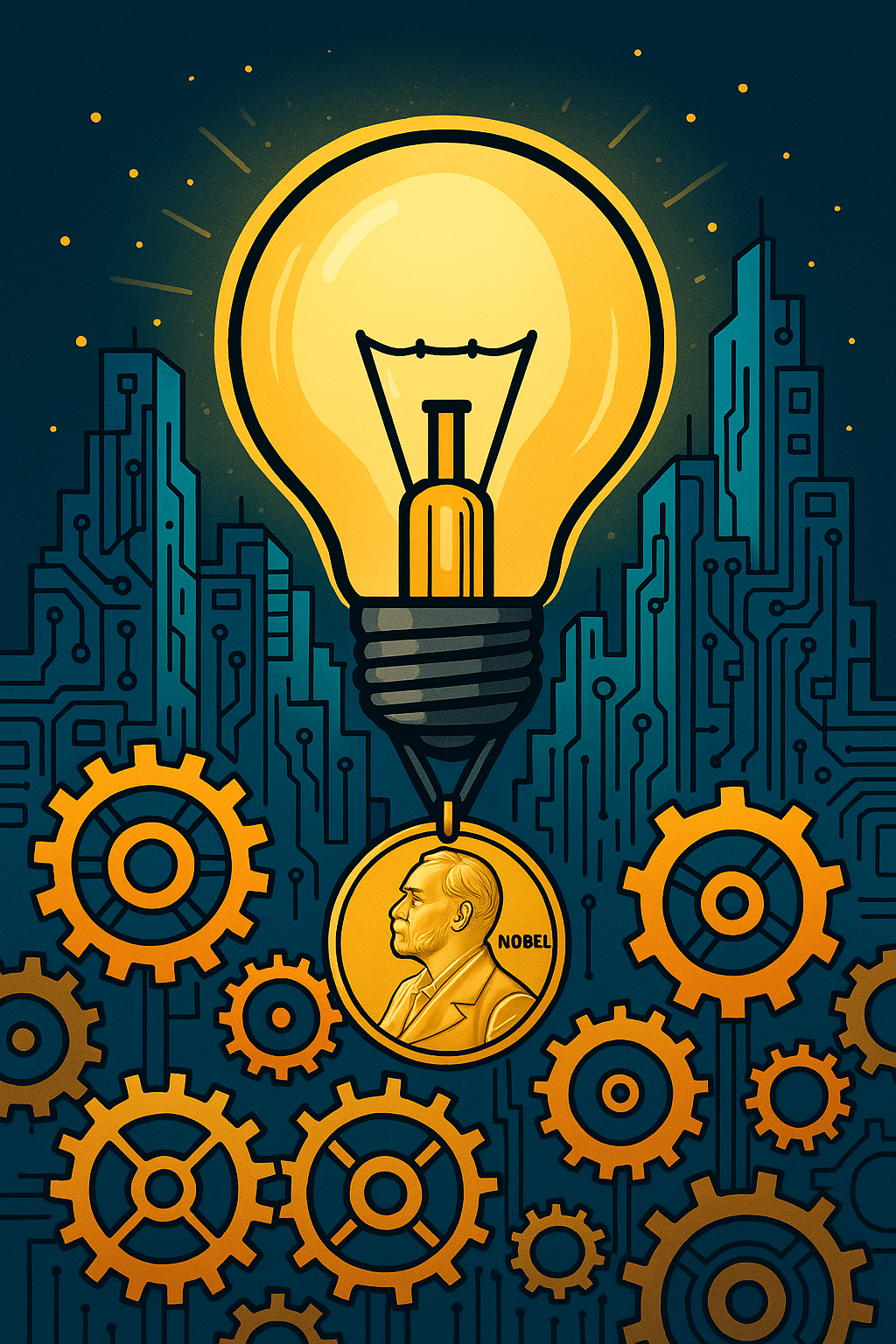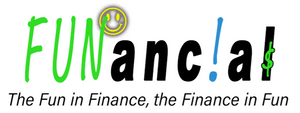
Innovation Gets the Nod at the Nobel Prize
🎉🏅 Free-market economies have a knack for turbo-charging innovation — and finally, the Nobel Prize seems to have caught on. In 2025, the Nobel Memorial Prize in Economic Sciences was awarded to Joel Mokyr, Philippe Aghion, and Peter Howitt. No scarecrows were harmed in the process, but there were certainly standing ovations. (No “No-bell,” but many hurrahs!)
Here’s how it broke down: Mokyr gets one half of the prize for “identifying the prerequisites for sustained growth through technological progress,” while Aghion and Howitt split the other half “for the theory of sustained growth through creative destruction.” 🔧💡
Straight from the official summary:
“For having explained innovation-driven economic growth … one half to Joel Mokyr … the other half jointly to Philippe Aghion and Peter Howitt.”
Source: Nobel Prize website
Why Does This Matter (Beyond Fancy Medals)?
In recent years, economics has been obsessively dwelling on who gets what (distribution, taxes, inequality). But Mokyr, Aghion, and Howitt daringly shift the spotlight to how we make more stuff — better stuff — in the first place.
They resurrect and mathematize a concept first (brilliantly) introduced by Joseph Schumpeter (who, born too early, sadly never won a Nobel himself): creative destruction. In Schumpeter’s vision, entrepreneurs constantly dismantle the old (think horses + buggies) to build the new (hello, Teslas). Mokyr, Aghion, and Howitt have shown that this is not just poetic metaphor — it’s measurable, model-able, testable in real economies.
In so doing, they remind us: Innovation, not redistribution, is the secret sauce of prosperity.
Innovation > Redistribution? Hear Me Out
Yes, inequality is real. Yes, Big Tech has clout. Yes, climate change looms large. Governments deserve space to tax, regulate, and intervene. But innovation — the generation of new ideas, products, business models, and technologies — is what actually increases the pie. Everything else just slices it differently.
Other systems (centrally planned, heavily regulated) may mimic free-market structures. But few can match the market’s ability to imagine what has never been.
You can steal a business model. You can copy a process. But you can’t easily replicate creativity itself.
In many parts of the world, entrepreneurship is gasping for air under the weight of red tape and taxes. In China, it’s sometimes muzzled by the state. Even in the U.S., the rate at which new rivals enter markets has been declining since the 1970s—even if post-pandemic start-ups have ticked upward again.
The Biden administration leaned too heavily into technocratic industrial plans; the Trump White House flirted dangerously with protectionism (which is, ironically, one of the greatest enemies of innovation). Meanwhile, the lone inventor tinkering in a garage, or the bold startup trying the impossible — that’s where progress really starts.
And by awarding this prize to these three economists, the Nobel Committee essentially says: Hey world, wake up: innovation matters.
Quick Look: The Laureates
-
Joel Mokyr (U.S. / Israel): Historian + economic theorist. He argues that cultural shifts — especially a belief in cumulative knowledge — sparked the Industrial Revolution.
-
Philippe Aghion (France): Co-author with Howitt; sets out models where competitive pressure pushes firms to innovate (or die).
-
Peter Howitt (Canada): Collaborator with Aghion; together they explore endogenous growth models, where growth is self-driven by innovation.
Recommended Further Reading (Yes, reading — I know it’s scary)
-
The Power of Creative Destruction by Aghion et al. — a modern, accessible update on their core ideas
-
The Entrepreneurial State by Mariana Mazzucato — a provocative counterpoint arguing the state plays a bigger innovation role than we often admit
- Capitalism, Socialism, and Democracy by Joseph A. Schumpeter — first published in 1942, this classic masterpiece introduces the concept of "creative destruction." Schumpeter states that innovation under capitalism is a process of incessant turmoil. Entrepreneurs spur progress by introducing new solutions and forms of organization, which disrupt incumbent structures.
📌 Quick Take / TL;DR
-
The 2025 Nobel in economics goes to Mokyr, Aghion, and Howitt — for mastering the math of innovation and creative destruction.
-
This signals a shift: innovation is just as noble as redistribution in economic discourse.
-
As utopian as wealth taxes and regulation sound, they can’t replace what markets do best: imagine, invent, disrupt.
-
In short: Innovation gets the Nobel’s nod — and that’s kind of a big deal.
From Transplants and Xenotransplantation To Transhumanism and Health + Wealth Optimization: Science De-livers—Or Are We Trying to Play God?
✅ FAQ (Frequently Asked Questions)
Q: What is “creative destruction,” anyway?
A: The idea — first introduced by Schumpeter — is that economic progress happens when old things get destroyed (or rendered obsolete) and new things emerge in their place. It’s messy, but it’s how we get iPhones, not just ever-better quills.
Q: Do these laureates deny inequality or regulation?
A: Absolutely not. They argue that the core engine is innovation. Regulation and redistribution have their place — but they are secondary. You can’t tax your way to prosperity if there are no new ideas left to tax.
Q: What about green tech and climate change?
A: Innovation models can be extended to “green creative destruction” — new energy technologies replacing fossil systems. Ultimately, solutions arise from innovation, not just mandates.
Q: Did the state play a role in these innovations?
A: Sure, often in the background (through basic science, infrastructure, or incentives). Mazzucato’s work emphasizes this, reminding us that public and private efforts often collaborate in the innovation dance.
Q: Where can I read the official Nobel announcement?
A: Visit the Nobel Prize website’s summary of the 2025 economics prize. (That link is way more inspiring than your high school economics textbook.)
A Couple of Suggested External Links
-
You can read the official announcement and detailed summary on the Nobel Prize site here (yes, the math gets heavier, but the prose is still readable).
-
For a spicy counterpoint, check out Mariana Mazzucato’s views — she argues governments have been the original (and underrated) venture capitalists in The Entrepreneurial State.
A Final Chuckle (Because Why Not)
Why did the economist give a standing ovation to the inventor?
Because innovation is outstanding in its field.
All joking aside: by celebrating the architects of innovation, the 2025 Nobel sends a message: disruption isn’t just terrifying — it’s essential. Let’s hope more economists (and policymakers) take notice.
🧾⚠️📢 Fun Disclaimer: 🧾⚠️📢
This article is for informational and comedic purposes only.
Disclosure: No economists were disrupted in the making of this article. All ideas expressed here are subject to creative destruction — including this disclaimer. 💡💥
This article contains traces of optimism, sarcasm, and invisible hands. Market turbulence may occur. Consult your inner entrepreneur before taking it seriously. 📉📈
We love science and technology — but most of all we love to smile and meme.
We sell jokes and opinions — and yes, we’re billing your sense of humor. 🎪💸💥
Invest at your own risk. Love at any pace. Laugh at every turn. 😄
🧭 Want More Like This?
👉 Head over to our Tech & Innovation Hub or our News & Perspectives with a Different Lens hub
👉 Browse our Funanc1al Wellness Hub for body insights with a wink and a plank
👉 Explore our Foodies Travel Hub for even more fun!
👉 Check our satirical finance series: “We the Spenders” (Coming soon)
👉 Or explore our Funanc1al Political Humor Roundup (Due anytime, if you dare to go deep)
👀 Want to stay relevant (and entertained)?
Visit Funanc1al.com — because we cover serious ideas with unserious emoji.
Quick links
Search
Privacy Policy
Refund Policy
Shipping Policy
Terms of Service
Contact us
About us
FUNanc!al distills the fun in finance and the finance in fun, makes news personal, and helps all reach happiness.
